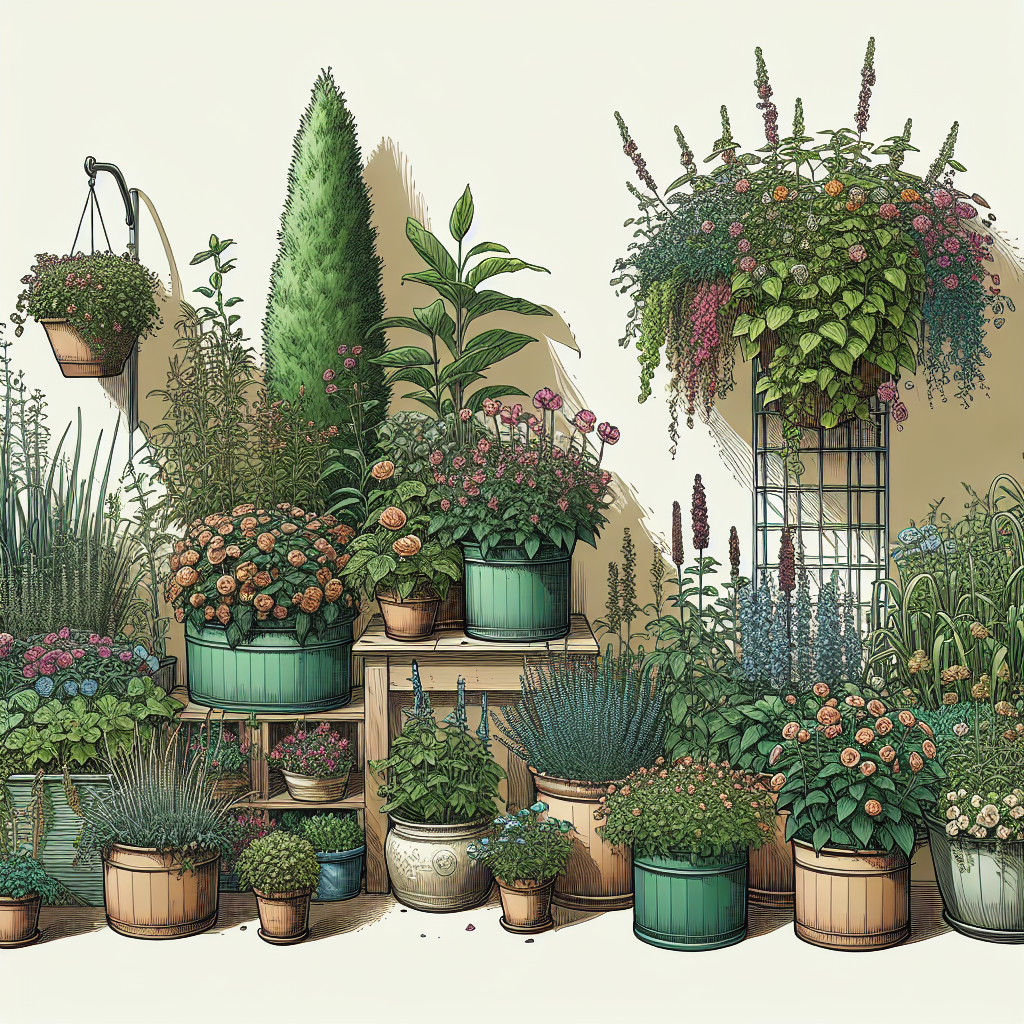Whether you live in a small apartment or have a tiny yard, limited space can often pose a challenge when it comes to gardening. However, with a little creativity and some careful planning, you can still enjoy the beauty of growing your own plants by utilizing container gardens. Container gardens are an excellent solution for those with limited space as they allow you to grow a variety of plants in pots, planters, or containers.
There are many benefits to creating a container garden. Not only can it help maximize your available space, but it also allows for easy customization and flexibility. You can move your containers around to find the best light and temperature conditions for your plants, making it easier to care for them. Additionally, container gardening is less labor-intensive than traditional gardening since there is no need for extensive weeding or tilling of the soil.
When planning your container garden, there are several things to consider in order to make the most of your limited space. First and foremost, think about what types of plants you would like to grow and what their needs are in terms of sunlight, water, and soil. Some plants require more sunlight than others, so be sure to place them in an area that receives adequate light throughout the day.
Next, choose the right containers for your plants. There are many different types of containers available, including plastic pots, ceramic planters, hanging baskets, and wooden boxes. When selecting containers, make sure they have drainage holes at the bottom to prevent water from pooling and causing root rot. Additionally, consider the size of the containers – larger pots will allow for more root growth and provide better stability for taller plants.
In order to make the most of your limited space with container gardens, consider vertical gardening techniques. Vertical gardening involves growing plants upwards instead of outwards by utilizing trellises, stakes, or hanging baskets. This is particularly useful for vining plants such as tomatoes or cucumbers that require support as they grow.
Another way to maximize space in your container garden is by planting in layers. By stacking pots or using tiered plant stands, you can create a multi-level garden that allows you to grow more plants in a smaller area. Consider planting taller plants towards the back and shorter plants towards the front to create a visually appealing display.
In addition to maximizing space with vertical gardening and layering techniques, you can also utilize companion planting in your container garden. Companion planting involves grouping together plants that benefit each other by attracting beneficial insects or repelling pests. For example, planting marigolds alongside tomatoes can help deter aphids and other harmful insects.
When caring for your container garden, be sure to regularly water your plants as needed and fertilize them periodically with a balanced fertilizer. Keep an eye out for signs of pests or diseases and take action promptly if necessary. Pruning dead or yellowing leaves will help promote healthy growth and prevent disease spread within your containers.
With some careful planning and creativity, you can make the most of limited space with container gardens. Whether you are growing herbs on a windowsill or creating a lush oasis on a small balcony, container gardening offers endless possibilities for bringing greenery into your home. So roll up your sleeves and get started – who says you need acres of land to have a thriving garden?














